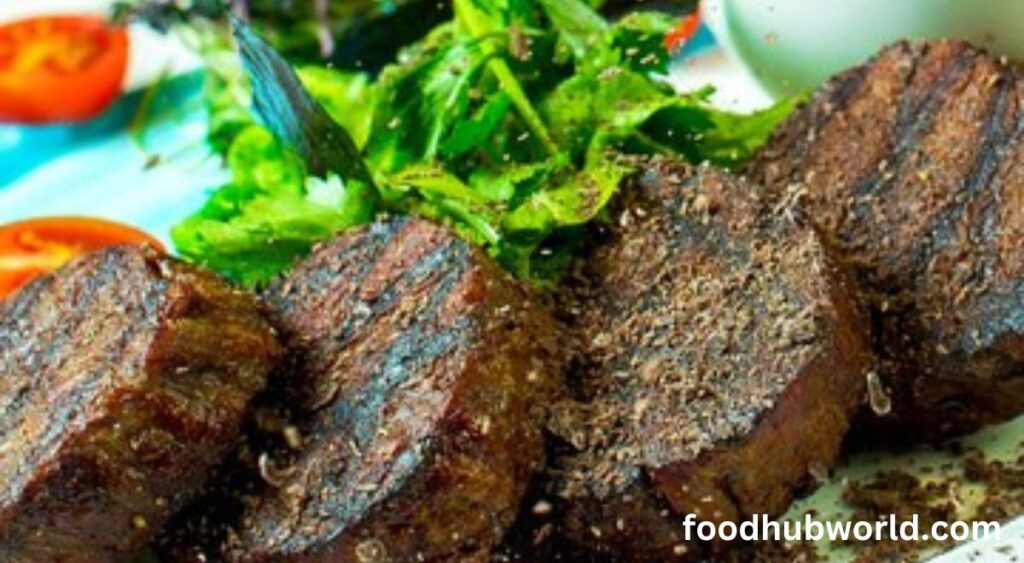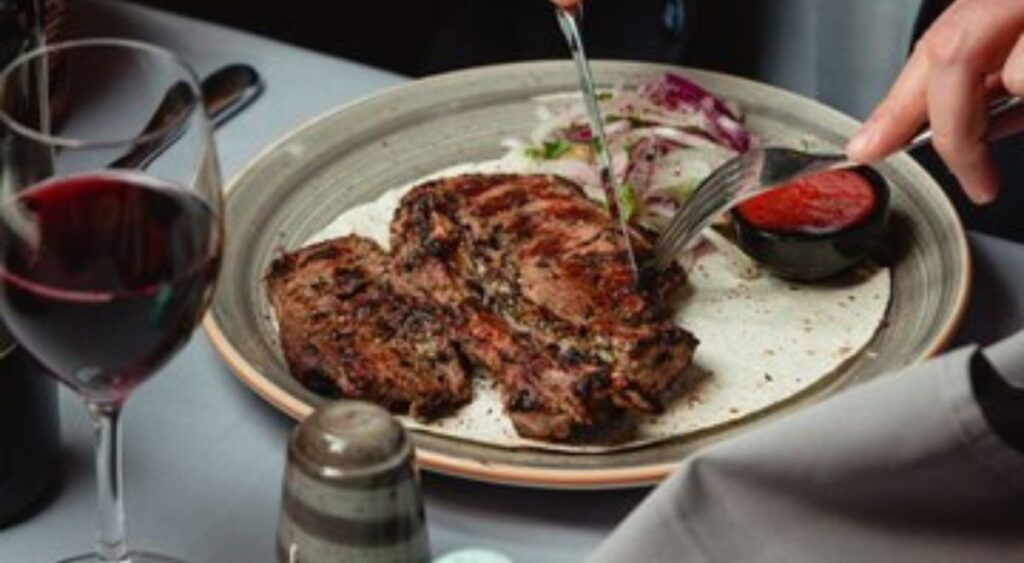Introduction of Simple Brisket Brine Recipe In 2024
Brisket is a popular cut of beef, especially for barbecues and smoked dishes. However, cooking brisket can be tricky because it’s a tough cut of meat that requires slow cooking to become tender and juicy. One of the best ways to enhance the flavor and tenderness of brisket is by using a brine. A simple brisket brine recipe can make a world of difference, infusing the meat with flavors and moisture that will make your brisket unforgettable.

Table of Contents
Simple Brisket Brine Recipe In 2024
Now that you know why brining is essential for brisket, let’s get into a simple brisket brine recipe that you can easily make at home. This recipe uses basic ingredients that you likely already have in your kitchen.
Ingredients:
- 1 gallon of water
- 1 cup of kosher salt
- 1/2 cup of brown sugar
- 1/4 cup of black peppercorns
- 2 bay leaves
- 1/4 cup of apple cider vinegar
- 4 cloves of garlic, crushed
- Optional: 1 tablespoon of paprika, 1 tablespoon of onion powder, 1 tablespoon of mustard seeds

Instructions:
- Prepare the Brine:
- In a large pot, combine the water, kosher salt, and brown sugar. Stir the mixture over medium heat until the salt and sugar have fully dissolved.
- Add Flavorings:
- Once the salt and sugar have dissolved, remove the pot from the heat. Add the black peppercorns, bay leaves, apple cider vinegar, and crushed garlic. If you’re using optional spices like paprika, onion powder, or mustard seeds, add them at this stage as well.
- Cool the Brine:
- Allow the brine to cool completely. You can speed up this process by placing the pot in an ice bath or adding a few ice cubes to the brine.
- Brine the Brisket:
- Place the brisket in a large, non-reactive container (such as a stainless steel or glass container). Pour the cooled brine over the brisket, ensuring that the meat is fully submerged. You can weigh down the brisket with a plate if necessary.
- Refrigerate:
- Cover the container and refrigerate the brisket in the brine for 12 to 24 hours. The longer you brine, the more flavorful the brisket will be.
- Remove and Rinse:
- After brining, remove the brisket from the brine and rinse it under cold water to remove any excess salt. Pat the brisket dry with paper towels.
- Cook the Brisket:
- Your brisket is now ready to be smoked, grilled, or slow-cooked according to your preferred method.

Benefits of Brining Brisket:
- Enhanced Flavor: The brine infuses the brisket with flavors that permeate deep into the meat, making every bite delicious.
- Improved Moisture Retention: Brining helps the brisket retain moisture during the long cooking process, ensuring it doesn’t dry out.
- Tenderization: The salt in the brine helps break down some of the tough muscle fibers, making the brisket more tender.
- Crispier Bark: The sugar in the brine can help create a caramelized crust or bark on the outside of the brisket when cooked, adding texture and flavor.
Tips for the Perfect Brisket Brine
While the basic brine recipe above will give you a delicious brisket, there are a few tips and tricks that can help you customize your brine and achieve the perfect flavor:
- Experiment with Spices: The brine is a great place to get creative with flavors. Try adding different spices, herbs, or even citrus zest to the brine to complement the flavor profile of your brisket.
- Use Cold Water: Always cool your brine completely before adding the brisket. Adding the brisket to hot or warm brine can start cooking the meat prematurely, affecting the texture.
- Timing is Key: Brining for too long can result in overly salty meat, while too short of a brine might not provide enough flavor. A general rule of thumb is 1 hour of brining per pound of meat, but for brisket, 12 to 24 hours is ideal.
- Consider Dry Brining: If you’re short on time or prefer not to use a wet brine, you can try dry brining. This involves rubbing the brisket with a mixture of salt and spices and letting it sit in the refrigerator for 12 to 24 hours.
- Monitor the Temperature: When cooking your brined brisket, monitor the internal temperature closely. Brined meat tends to cook a little faster, so be sure not to overcook it.
Nutritional Information
Understanding the nutritional content of your brine is essential, especially if you are mindful of your salt or sugar intake. Below is a general nutrient table for the simple brisket brine recipe provided above:
| Nutrient | Per Serving (1 Cup of Brine) |
|---|---|
| Calories | 40 |
| Total Fat | 0g |
| Sodium | 3,600mg |
| Total Carbohydrates | 10g |
| Dietary Fiber | 0g |
| Sugars | 8g |
| Protein | 0g |
| Potassium | 10mg |
| Calcium | 10mg |
| Iron | 0.2mg |

FAQs
What Should I Brine My Brisket In?
You should brine your brisket in a mixture of water, kosher salt, and sugar for the best results. You can also add spices like peppercorns, garlic, and bay leaves to enhance the flavor.
What is the Simple Brine Formula?
The simple brine formula is 1 cup of kosher salt and 1/2 cup of sugar dissolved in 1 gallon of water. This basic mixture can be customized with additional spices and herbs for extra flavor.
What is the Ratio of Salt and Sugar in Brine?
The ideal ratio for brine is 1 part salt to 1/2 part sugar. For example, if you use 1 cup of salt, add 1/2 cup of sugar. This balance helps to season the meat and retain moisture.
Do You Rinse Brisket After Brining?
Yes, you should rinse brisket after brining to remove excess salt from the surface. After rinsing, pat the brisket dry with paper towels before cooking.
Conclusion
Brining is a simple yet highly effective way to enhance the flavor, tenderness, and juiciness of brisket. This simple brisket brine recipe is easy to make and uses basic ingredients that you probably already have in your kitchen. By taking the time to brine your brisket, you’re ensuring that the final result is a mouthwatering, juicy, and flavorful dish that will leave everyone asking for seconds.
So, next time you plan on cooking brisket, give this simple brine recipe a try. Your taste buds will thank you!
Pingback: Kentucky Fried Chicken Hot Wings Recipe in 2024 - Top 3 Secrets
Pingback: Pit Barrel Cooker Recipes in 2024 - Top 10 Secrets
Pingback: Porterhouse Pork Chop Recipe In 2024-Top 6 secrets